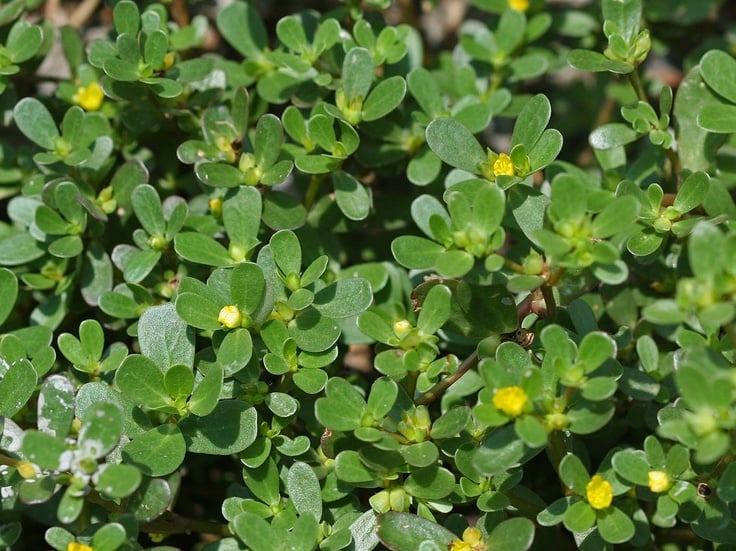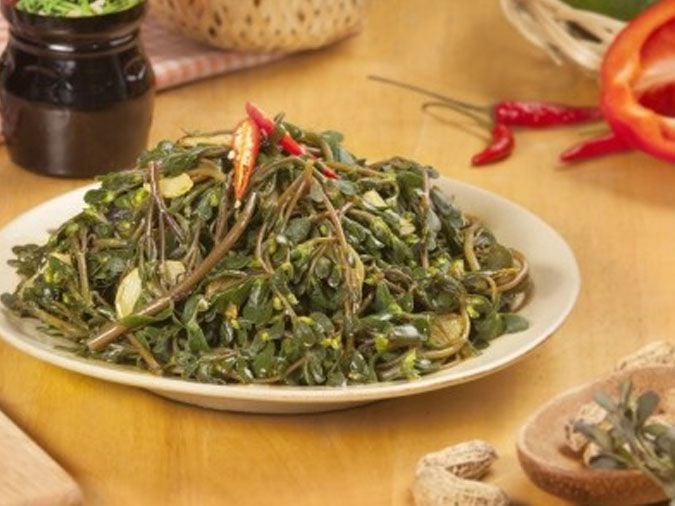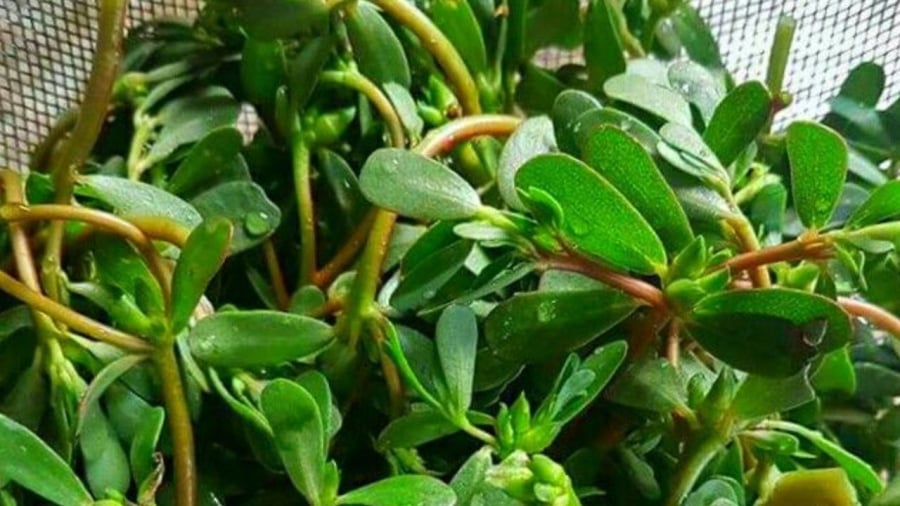Purslane, often found growing wild in paddy fields, barren lands, or damp walls, has transformed from a mere weed to a sought-after delicacy. Beyond its refreshing sour taste, purslane surprises with its exceptional nutritional value and medicinal benefits. Let’s explore why this humble vegetable is gaining attention from home cooks and nutrition experts alike.
1. What is Purslane?
Purslane (Portulaca oleracea) is a creeping plant commonly found growing wild in moist, sunny areas. It has reddish stems, small, succulent leaves, and tiny yellow flowers. Purslane is easy to cultivate and requires minimal care, which is why it was once considered a “poor man’s vegetable,” consumed only during food scarcity.
However, modern research reveals that purslane boasts an impressive nutritional profile, even surpassing many commonly cultivated vegetables.

2. Outstanding Nutritional Profile of Purslane
According to leading nutritionists, purslane is one of the few vegetables naturally containing omega-3 fatty acids, a rare find in green leafy vegetables.
Additionally, purslane is packed with:
Vitamins A, C, E, and B-complex
Antioxidants such as flavonoids and betalains
Minerals like magnesium, potassium, iron, and calcium
Mucilage and soluble fiber for digestive health
Given its high nutritional value and safety profile, purslane has earned recognition from both traditional and modern medical practitioners for its therapeutic benefits.

3. Amazing Health Benefits of Purslane
Heat-Clearing and Detoxification: With its cooling nature and mild sour taste, purslane helps clear heat, reduce inflammation, and cool the liver, making it ideal for summer consumption to detoxify the body and alleviate skin issues.
Gastrointestinal Support: In traditional medicine, purslane is valued for its antibacterial and anti-inflammatory properties, making it useful for treating dysentery, diarrhea, and gastrointestinal infections. The mucilage in purslane also protects the intestinal mucosa and improves digestive motility.
Cardiovascular Benefits: Modern studies suggest that purslane dilates blood vessels, reduces blood lipids, and helps prevent atherosclerosis and hypertension. It’s an excellent vegetable for the elderly and those at risk of cardiovascular disease.
Immune Boosting and Antioxidant Properties: The antioxidants in purslane slow down aging, protect cells from free radical damage, and naturally enhance immune function.
Skin Benefits: By cooling the liver and detoxifying the body, purslane is believed to reduce acne and promote clear, even skin. Fresh purslane can be crushed and applied topically or used as a wash for itchy, allergic skin conditions.

4. Purslane Delicacies: A Taste of Rustic Charm
Beyond its health benefits, purslane delights with its crisp texture and tangy flavor. Its versatility lends itself to a variety of dishes, including:
- Purslane and Shrimp Soup: A refreshing summer dish with a subtle sour note.
- Boiled Purslane with Spicy Garlic Dip: A simple yet flavorful dish evoking rustic charm.
- Sweet and Sour Purslane Salad: A unique, mouthwatering appetizer.
- Stir-fried Purslane with Beef or Eggs: A nutritious way to enhance protein intake.
- Pickled Purslane: A traditional side dish that aids digestion and enhances flavor.
Today, purslane is featured in the menus of rustic cuisine restaurants as a delicacy, blending the flavors of the countryside with modern healthy eating trends.
5. Precautions when Consuming Purslane
- Individuals with a cold constitution or frequent diarrhea should avoid excessive consumption.
- Pregnant women should consult a doctor as purslane may induce uterine contractions.
- Thoroughly wash purslane before cooking, especially when sourced from the wild, to remove any parasites or soil residue.
Purslane’s journey from a roadside weed to a prized vegetable showcases how something seemingly ordinary can hold exceptional value. If you’re seeking a vegetable that delights both the palate and nourishes the body, purslane is undoubtedly a worthy choice.






























